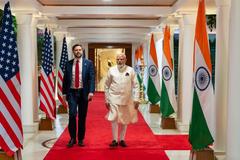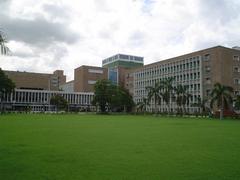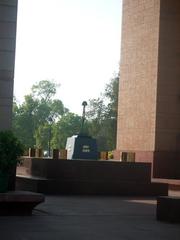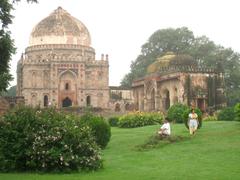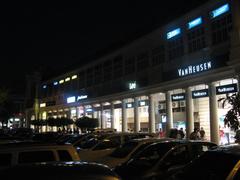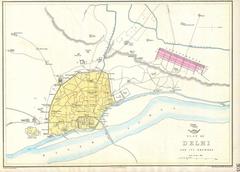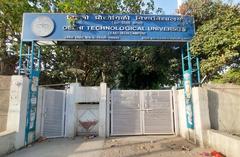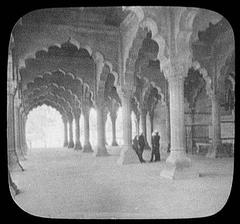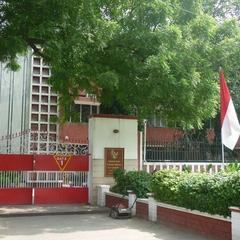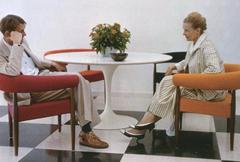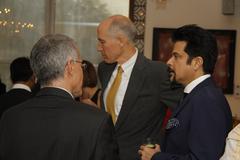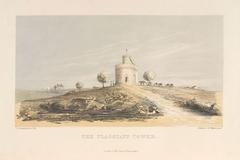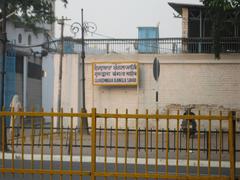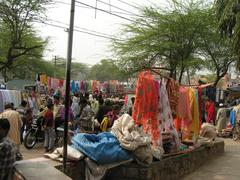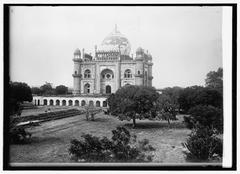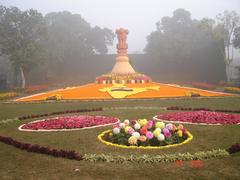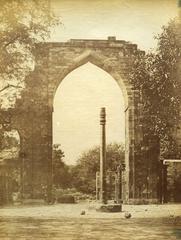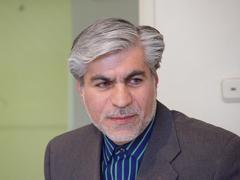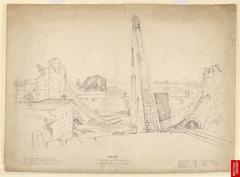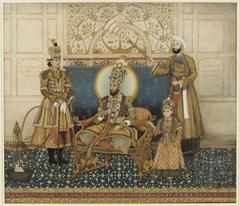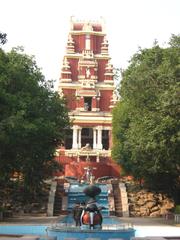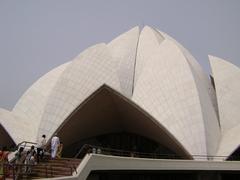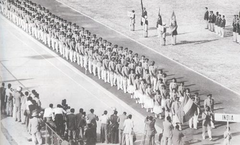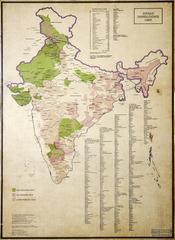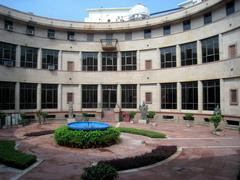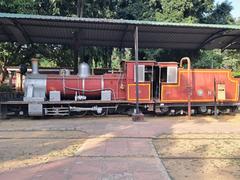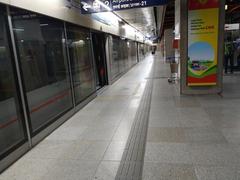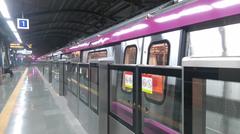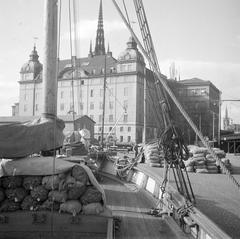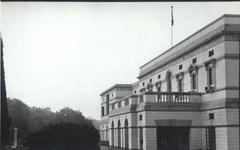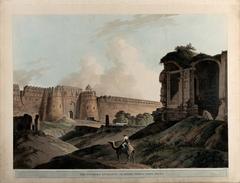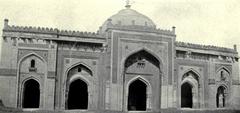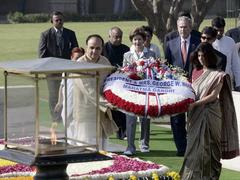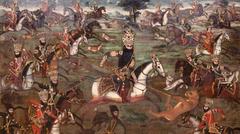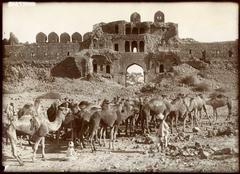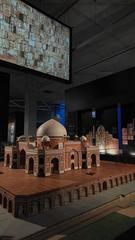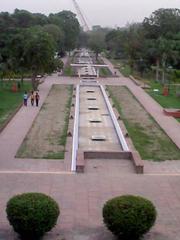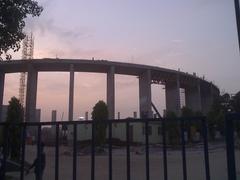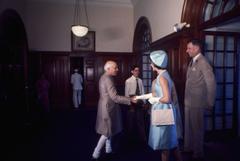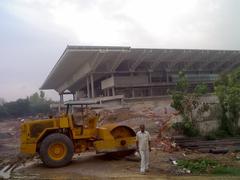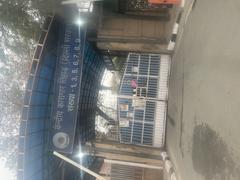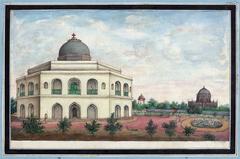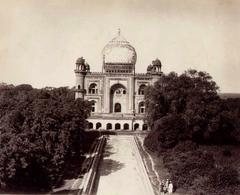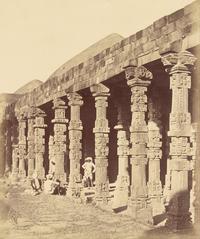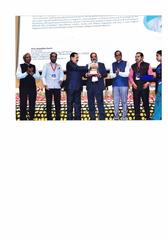Parliament Museum New Delhi: Visiting Hours, Tickets, and Comprehensive Guide
Date: 04/07/2025
Introduction
The Parliament Museum in New Delhi stands as a premier destination for anyone interested in exploring India’s democratic heritage, legislative evolution, and architectural grandeur. Nestled within the historic Parliament House complex, the museum offers a unique blend of interactive exhibits, rare artifacts, and state-of-the-art multimedia installations—making it an essential stop for history enthusiasts, students, and tourists alike. This guide provides detailed information on the museum’s history, cultural significance, ticketing, visiting hours, accessibility, travel tips, and more to ensure you make the most of your visit.
Contents
- Introduction
- Historical Background and Origins
- Architectural and Cultural Significance
- Permanent and Thematic Exhibits
- Interactive and Multimedia Experiences
- Key Artifacts and Collections
- Visitor Information: Hours, Tickets & Accessibility
- Travel Tips and Nearby Attractions
- Guided Tours and Educational Programs
- Frequently Asked Questions (FAQ)
- Conclusion
- References
Historical Background and Origins
The roots of the Indian Parliament date back to the colonial era, with the Parliament House—designed by Sir Edwin Lutyens and Sir Herbert Baker—constructed between 1921 and 1927 (Old Parliament House, New Delhi - Wikipedia). Initially serving as the seat of the Imperial Legislative Council, the building later housed the Constituent Assembly, which drafted the Constitution of India. The Parliament Museum, conceptualized to chronicle this journey, preserves and showcases artifacts, documents, and narratives tracing India’s transition from ancient governance systems—such as the Vedic sabhas and samitis—to the world’s largest modern democracy (official Parliament Museum website).
Architectural and Cultural Significance
The Parliament Complex
The Parliament House is an architectural icon, embodying a harmonious blend of classical Western and Indian motifs. Its circular design, grand sandstone columns, and colonnaded verandahs are notable features (Tour My India - Parliament House New Delhi). The complex also includes the newly constructed Parliament Building, featuring modern interpretations of Indian traditions and spaces like the Constitution Hall, which celebrates Republic Day with a skylight depicting the night sky of January 26, 1950 (Architectural Digest - New Parliament Building Design).
Museum Integration
The Parliament Museum is integrated into the Parliament Library Building, adjacent to the main Parliament House. Designed for accessibility and immersive learning, it employs contemporary exhibition technologies to enhance the storytelling of India’s legislative journey.
Permanent and Thematic Exhibits
Journey of Indian Democracy
The museum’s core exhibition traces the evolution of representative governance in India, from ancient assemblies to the modern bicameral Parliament. The “Journey of Democracy” gallery uses artifacts, archival photographs, and multimedia presentations to bring this story to life (Archaeological Survey of India).
The Constitution and Freedom Struggle
A dedicated section explores the making of the Constitution, displaying facsimiles of the original handwritten document and chronicling key debates of the Constituent Assembly. Exhibits on the freedom movement feature rare photographs, personal effects of leaders, and multimedia reenactments of milestones like the first Parliament session.
Replicas and Dioramas
Detailed scale models of the Parliament House, dioramas of historic debates, and animatronic installations like Jawaharlal Nehru’s “Tryst with Destiny” speech allow visitors to experience pivotal moments in Indian history.
Interactive and Multimedia Experiences
- Virtual Reality (VR) and Augmented Reality (AR): Simulate parliamentary sessions and historic events, providing immersive educational experiences.
- Audio-Visual Presentations: The museum’s theater screens documentaries on legislative history and key political figures, available in multiple languages.
- Mock Parliament and Voting Booths: Visitors can participate in mock legislative sessions and elections, fostering civic engagement among youth and students.
Key Artifacts and Collections
- Historic Documents: Original letters, early parliamentary bills, and memorabilia from the first general elections.
- Personal Belongings: Items such as Mahatma Gandhi’s spectacles, Jawaharlal Nehru’s pen, and Dr. B.R. Ambedkar’s chair.
- Gifts and Mementos: Artifacts presented by foreign dignitaries and parliaments, illustrating India’s diplomatic ties.
- Art and Sculpture: Murals, paintings, and sculptures depicting landmark moments in Indian democracy.
Visitor Information: Hours, Tickets & Accessibility
Visiting Hours
- Tuesday to Saturday: 11:00 AM – 5:00 PM
- Closed: Sundays and Mondays (except during parliamentary sessions, when schedules may change)
- Lunch Break: Possible closure between 1:00 PM and 2:00 PM; check ahead (Delhi Tourism - Parliament Museum).
Tickets and Booking
- Adults: ₹15 per person
- Children/Students: Free with valid ID
- Foreign Nationals: Generally same fee, confirm at counter
- Group Visits: Schools and educational groups should book in advance (Delhi Darshan - Parliament Museum)
- Booking: Tickets are available on-site only; online booking is not available as of July 2025 (official Parliament Museum website).
Entry and Security
- ID Required: Government-issued photo ID is mandatory
- Security: Airport-style screening; no cameras, large bags, or electronic devices allowed inside
- Dress Code: Modest attire recommended
Accessibility
- Wheelchair Accessible: Ramps, elevators, and accessible restrooms available
- Assistance: Staff support for differently-abled visitors; prior notification advised
- Audio and Braille: Audio guides and Braille materials provided in multiple languages
Travel Tips and Nearby Attractions
- Best Time to Visit: October to March for pleasant weather; weekday mornings are less crowded
- Transport: Nearest metro is Central Secretariat (Yellow and Violet Lines); taxis, auto-rickshaws, and app-based cabs are convenient
- Nearby Sites: India Gate, Rashtrapati Bhavan, Jantar Mantar, Gurudwara Bangla Sahib, Connaught Place, and Delhi Metro Museum (Delhi Tourism)
- Visit Duration: 1.5 to 2 hours recommended for a complete experience
Guided Tours and Educational Programs
- Guided Tours: Available in English, Hindi, and regional languages, led by trained staff and subject experts
- Educational Initiatives: Workshops, seminars, and mock Parliaments for students and youth; prior arrangement required for groups (Sansad (Parliament) Study Visits)
Frequently Asked Questions (FAQ)
Q: What are the Parliament Museum visiting hours?
A: Tuesday–Saturday, 11:00 AM to 5:00 PM; closed Sundays and Mondays.
Q: How do I get tickets?
A: Tickets are only available at the museum entrance; no online booking is available.
Q: Is the museum accessible for differently-abled visitors?
A: Yes, it is fully accessible and offers staff assistance.
Q: Can I take photographs inside?
A: Photography is strictly prohibited inside the museum.
Q: Are guided tours available?
A: Yes, for groups and educational visits; request in advance.
Q: What is the nearest metro station?
A: Central Secretariat (Yellow and Violet Lines), about a 10–15 minute walk away.
Conclusion
The Parliament Museum in New Delhi offers a comprehensive and engaging exploration of India’s democratic heritage, blending rare artifacts, immersive exhibits, and modern technology. Its central location, accessibility features, and proximity to other iconic New Delhi historical sites make it a must-visit destination. To ensure a smooth visit, check the latest hours and security protocols, bring a valid ID, and consider joining a guided tour for deeper insights. For up-to-date information, always refer to the official Parliament Museum website before your visit.
Enhance your Delhi experience by exploring nearby attractions and using travel resources like the Audiala app for interactive guides and updates.
References
- Parliament Museum India - Official Website
- Old Parliament House, New Delhi - Wikipedia
- Tour My India - Parliament House New Delhi
- Architectural Digest - New Parliament Building Design
- Archaeological Survey of India
- Delhi Darshan - Parliament Museum
- Delhi Tourism - Parliament Museum
- Sansad (Parliament) Study Visits
- Parliament Museum - Official Site
